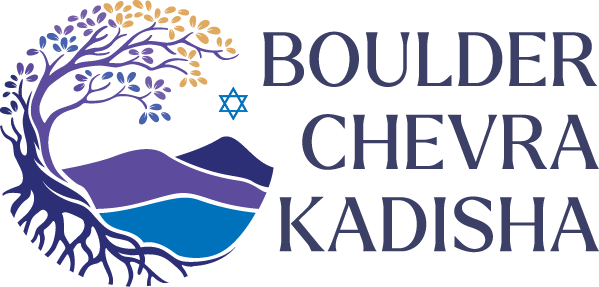Jewish End of Life Practices - Jewish Practices Between Death and Burial
By: Rabbi Eva Sax-Bolder, Community Rabbi Boulder, CO
There are two areas of interest when we discuss what happens between death and burial: care of the body of the deceased and what mourners should do during this period.
This period between the time of death and the burial is called aninut.
Between Death and Burial - Aninut
Courtesy of Kavod V’Nichun www.kavodvnichum.org
Mourning Starts
A man who mourns during aninut is called an “onen“, a women an “onenet”. This is when most people feel like they are “in-between”. An individual in this situation has no religious obligations beyond attending to the practical necessities of arranging for the funeral. The Jewish understanding is that an onen/onenet is not able to focus on anything other than the immediate issue of the burial, and is not expected to be capable of any ritual observances (and may even be prohibited from doing them), even those that might otherwise be performed on a daily basis (such as reciting Sh’ma).
As Rabbi Maurice Lamm has observed: “The onen is a person in deep distress, a person yanked out of normal life and abruptly catapulted into the midst of inexpressible grief. He is disoriented, his attitudes are disarrayed, his emotions [are] out of gear. The shock of death paralyzes his consciousness and blocks out all regular patterns of orderly thinking.” (The Jewish Way in Death and Mourning, p. 21).
Indeed, we are discouraged from trying to comfort the mourner prior to the burial. Pirkei Avot (Ethics of the Fathers) teaches, “Do not console a person whose deceased relative lies before him” (4:23). Therefore, the common Western customs of viewing the body and visitation are contrary to traditional Jewish practice.
Although an onen/onenet is exempt from all positive mitzvot (such as reciting the Amidah), he/she must observe all the prohibitive laws (for example, not eating non-kosher food). The mourner’s main task is to attend to the details of the burial. Naturally, friends and community members may assist. There is no liturgy assigned for this period.
As for the body of the deceased, there are two main rituals associated with this aninut period: taharah (preparation of the body for burial) and shmirah (“guarding” or “watching” the dead – keeping them company so the soul is not alone).
“The onen is a person in deep distress, a person yanked out of normal life and abruptly catapulted into the midst of inexpressible grief. He is disoriented, his attitudes are disarrayed, his emotions [are] out of gear. The shock of death paralyzes his consciousness and blocks out all regular patterns of orderly thinking.”
The Tahara Ritual
In Jewish tradition, we are all holy beings created in the image of the Divine. This means that when we die, our body is considered a holy thing and should be treated with respect and dignity. Jewish tradition also considers the holy spiritual aspect of a human being, the soul, to be eternal, returning to the Divine upon death. So when a person dies, we have a special ritual to prepare the body for burial and at the same time, midwife the soul from this world to the next. This beautiful ritual is called taharah, from the Hebrew root having to do with purification. The ritual includes physical washing of the body along with a powerful spiritual liturgy, and a pouring of water, all intended to assist the soul on its journey.
Shmira: The Ritual of Guarding
Shmirah is the ritual of guarding the deceased’s body; in some ways it can be likened to an honor guard. Some prefer to call it “accompaniment” as we are ensuring that the soul does not feel alone during this time in which it is adjusting to not having a body. It is traditionally done from the time of death until burial. In some communities shmirah is not begun until after the taharah. It is generally done in shifts, with each person doing the task for a few hours.
A shomer watches over the deceased from the time the deceased comes under the responsibility of the Chevrah Kadisha until the funeral and burial. In earlier times, the guarding of Jewish bodies was a physical concern, while today it provides comfort to the soul of the deceased and to the grieving families, and allows community members an additional opportunity to participate in Chevrah Kadisha activities.
Boulder County Mortuaries and Rabbis
3395 Penrose Pl, Boulder, CO 80301 (303) 442 4411
2969 Baseline Road, Boulder, CO 80303 (303) 440-3960
Haver - Rabbinic Council Boulder Colorado




